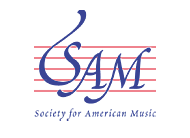A recent New York Times article on a Sacred Harp course taught in the Yale music department features my dissertation, “Folklore’s Filter: Race, Place, and Sacred Harp Singing.” The article places the course, taught by Ian Quinn, in the context of recent student protests over racial inequality on campus. For Quinn, “Once the racial tensions broke out on campus, it seemed to me particularly urgent that we spend time talking about” race and Sacred Harp. As Times reporter Phillip Lutz notes, my dissertation “has become a reference for Quinn as he readjusts the course materials as a result of the racial protests.” The article continues:
The dissertation examines how in the civil rights era, a growing number of folklorists began to document black shape-note groups, and festivals started to feature them next to their white counterparts. Speaking to students before the community members arrived to sing, Mr. Quinn invoked Mr. Karlsberg’s analysis of multiracial programming at the Smithsonian’s Festival of American Folklife in 1970. He showed a video of the Wiregrass Sacred Harp Singers, a black shape-note group, performing at the 1983 Smithsonian festival.
But he said that such efforts at recognizing the tradition’s diversity had a limited effect on entrenched attitudes in schools, churches and other places where most of the singing is done. “By nature, Sacred Harp singing is a kind of conservative, tradition-bound practice,” he said. “That’s going to be the issue those of us who would like to see a more diverse community of singers will have to face.”
Mr. Quinn said Mr. Karlsberg’s dissertation represents one of the most sustained counterweights to Jackson’s work to date. Mr. Karlsberg, for his part, said sessions like Mr. Quinn’s might, when coupled with targeted outreach, constitute a forum for diversifying the Sacred Harp experience.
“The welcome mat is there, and the structure, the setup, the practices make it really great for that,” he said.
You can read Lutz’s article, “A Different Note on Race at Yale,” on the New York Times website. Thanks to Ian Quinn for reading my dissertation with his students, and to Phillip Lutz for thoughtfully engaging with the issues my work raises.
